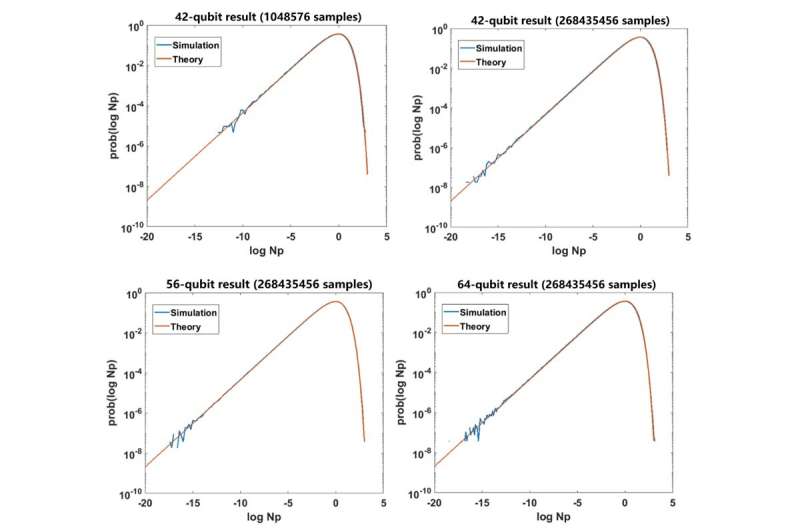Researchers successfully simulate a 64-qubit circuit

Quantum computers are based on the principles of quantum mechanics. Compared with classical bits, qubits can be at the superposition between zero and one, so a quantum computer composed of qubits can calculate and store more data. Adding additional qubits can exponentially increase the computational capabilities of quantum computers, and the computational capabilities of quantum computers may soon surpass state-of-the-art supercomputers for certain tasks.
The last few years have seen a series of significant advances in quantum computing, in particular regarding superconducting quantum chips with reports of devices of 20 and 50 qubits with good fidelity. In the meantime, great progress has also been made with semiconductor quantum chips. The principle of quantum supremacy claims that the limit of classical computers would be transcended by a device of 50 qubits. Direct simulations of 50 qubits take about 16-PB of RAM to store the full vectors. Google and IBM teams have proposed some efficient methods for simulating the low-depth circuit, which raised this limit to 56 qubits (e.g., deferral of entanglement gates and Feynman path method).
Origin Quantum Company, cooperating with the team of Prof. Guang-Can Guo, presented a scheme of simulation based on transforming two-qubit gates, achieving a 64-qubit simulation of a universal random circuit of depth 22 using a 128-node cluster, and 56- and 42-qubit circuits on a single PC. In particular, by transforming several control-Z (CZ) gates to measurement and single-qubit gates, the circuit is mapped onto an additional 2n sub-circuits. These sub-circuits are formed by two blocks without any qubit entanglement between them, thereby converting an N qubit simulation problem into a group of N/2 The results of all the sub-circuits are then added together to reconstruct the final state. They also estimated that a 72-qubit circuit of depth 23 can be simulated in about 16 hours on a supercomputer identical to that used by the IBM team.
Their work enables simulating more qubits with less hardware burden and provides a new perspective for classical simulations. It only needs a single PC with GTX-1080Ti to calculate 42- and 56-qubit circuits. A 64-qubit circuit was simulated with a 128-node computer cluster, but the hardware resources they used have been greatly reduced compared with other methods.
The complexity grows exponentially with qubit number and depth, so the simulation of more than 50 qubits will always have an upper bound in depth. Nevertheless, the simulation of more qubits system with small depth still plays an important role for the study of quantum algorithms such as QFT and unsupervised machine learning. Moreover, the partitioning scheme could be combined with other simulation methods (e.g., Feynman path integral), to further reduce the complexity. These improvements may help to realize the simulation of many other quantum algorithms.
More information: Zhao-Yun Chen et al, 64-qubit quantum circuit simulation, Science Bulletin (2018). DOI: 10.1016/j.scib.2018.06.007
Provided by Science China Press



















